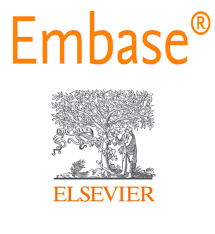STUDY OF QRS DURATION AND R/Q RATIO IN THE ASSESSMENT OF SEVERITY OF ACUTE MYOCARDIAL INFARCTION
Keywords:
Acute Myocardial Infarction (AMI), QRS Duration, R/Q Ratio, Electrocardiography (ECG), Left Ventricular Ejection Fraction (LVEF)Abstract
Background: Accurate early assessment of acute myocardial infarction (AMI) severity is crucial for guiding management and predicting outcomes. Electrocardiographic markers such as QRS duration and R/Q ratio may provide valuable prognostic information beyond traditional ST-segment analysis. Objective: To evaluate the association of QRS duration and R/Q ratio with the severity of AMI and to assess changes in these parameters following thrombolytic therapy. Methods: This descriptive observational study was conducted at the Department of General Medicine, Ballari Medical College and Research Centre. A total of 75 patients with confirmed ST-elevation myocardial infarction (STEMI) were enrolled. QRS duration and R/Q ratio were measured from standard 12-lead ECGs at admission and after thrombolysis. Associations with left ventricular ejection fraction (LVEF), Killip class, wall motion abnormalities, and arrhythmias were analyzed. Statistical methods included t-tests, chi-square tests, Pearson correlation, and ROC analysis. Results: Prolonged QRS duration (>100 ms) and low R/Q ratio (<0.2) were significantly associated with lower LVEF (p < 0.001), higher Killip class (p < 0.001), akinesia, and increased arrhythmias. Post-thrombolysis, significant improvements were seen in both QRS duration (mean reduction: 9.4 ± 1.2 ms) and R/Q ratio (mean increase: 0.21 ± 0.18; p < 0.001). ROC analysis showed strong predictive value of R/Q ratio (AUC = 0.948) and QRS duration (AUC = 0.926) for identifying patients with LVEF <35%. Conclusion: QRS duration and R/Q ratio are effective, easily obtainable ECG markers for assessing AMI severity and predicting left ventricular dysfunction. Their significant improvement after thrombolysis underscores their role in evaluating myocardial recovery and guiding clinical decision-making.
.png)









